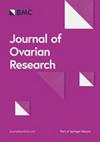重新审视自然月经周期--自然周期可信吗?
IF 3.8
3区 医学
Q1 REPRODUCTIVE BIOLOGY
引用次数: 0
摘要
黄体期(LP)的血清孕酮(P4)水平对妊娠的启动和维持起着至关重要的作用。然而,目前还不清楚自然周期是否始终提供最佳的内分泌状况,也不清楚黄体中期血清 P4 水平是否始终足以支持着床和早期妊娠。随着越来越多的冷冻胚胎移植周期在自然周期中进行,这个问题与生育治疗的关系变得更加密切。此外,在卵泡期(FP)测量的血清激素水平和协变量,如卵泡刺激素(FSH)、黄体生成素(LH)、雌二醇(E2)、抗苗勒氏激素(AMH)和前卵泡计数(AFC),是否可用于预测黄体期(LP)的 P4 水平?这项观察性前瞻性队列研究分析了26名健康女性,她们的周期长度在21-35天之间,体重指数(BMI)为131pmol/L),周期第10天(> 345pmol/L),发现黄体期P4水平≥30 nmol/L;因此,FP E2水平是黄体能力的预测指标。我们的研究结果突显了正常月经妇女在黄体期P4水平不达标的情况,以及黄体期P4水平在个体间和周期内的显著差异。本文章由计算机程序翻译,如有差异,请以英文原文为准。
The natural menstrual cycle revisited – can natural cycle be trusted
The serum progesterone (P4) level during the luteal phase (LP) plays a crucial role in the initiation and maintenance of pregnancy. However, it is unclear whether the natural cycle consistently provides the best endocrine profile and whether mid-luteal serum P4 levels are always sufficient to support implantation and early pregnancy. The question has become more relevant in relation to fertility treatment, as more frozen embryo transfer cycles are performed in the natural cycle. Moreover, can serum hormone levels and covariates measured during the follicular phase (FP), such as Follicle Stimulation Hormone (FSH), Luteinizing Hormone (LH), Estradiol (E2), Anti-Mullerian Hormone (AMH) and Antral Follicle Count (AFC), be used to predict P4 levels during the luteal phase (LP)? This observational prospective cohort study analysed 26 healthy women with a cycle length between 21–35 days and a body mass index (BMI) < 30 kg/m2. Blood sampling started on the fifth day of the menstrual cycle and continued every fifth day until the next cycle. The procedure was repeated for a total of three cycles. The study found that only ten women had a P4 level greater than 30 nmol/L on cycle day 20 or 25 in all three cycles. In total, only 45 cycles out of 77 cycles had serum P4 levels ≥ 30 nmol/L. The E2 level ≥ 345 pmol/L on cycle day 10 proved to be predictive of a P4 level of ≥ 30 nmol/L on either day 20 or day 25 with a sensitivity of 57% and a specificity of 89%. No other covariates, including the FSH level cycle day 5, LH levels during the follicular phase, age, weight, AFC and AMH cycle day 5 correlated with LP P4 levels. A significant correlation between FP E2 levels cycle day 5 (> 131pmol/L) and cycle day 10 (> 345pmol/L) and a LP P4 level ≥ 30 nmol/l was found; thus, the FP E2 level is a predictor of corpus luteum competence. Our findings highlight the existence of suboptimal P4 levels during the LP and a significant inter-individual and intra-cycle variation in P4 levels during the LP in regular menstruating women.
求助全文
通过发布文献求助,成功后即可免费获取论文全文。
去求助
来源期刊

Journal of Ovarian Research
REPRODUCTIVE BIOLOGY-
CiteScore
6.20
自引率
2.50%
发文量
125
审稿时长
>12 weeks
期刊介绍:
Journal of Ovarian Research is an open access, peer reviewed, online journal that aims to provide a forum for high-quality basic and clinical research on ovarian function, abnormalities, and cancer. The journal focuses on research that provides new insights into ovarian functions as well as prevention and treatment of diseases afflicting the organ.
Topical areas include, but are not restricted to:
Ovary development, hormone secretion and regulation
Follicle growth and ovulation
Infertility and Polycystic ovarian syndrome
Regulation of pituitary and other biological functions by ovarian hormones
Ovarian cancer, its prevention, diagnosis and treatment
Drug development and screening
Role of stem cells in ovary development and function.
 求助内容:
求助内容: 应助结果提醒方式:
应助结果提醒方式:


